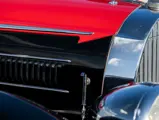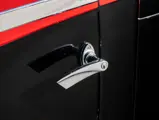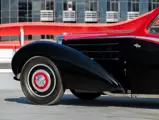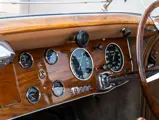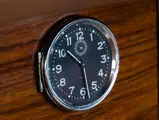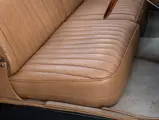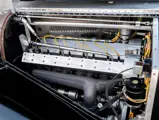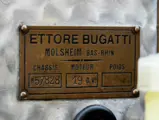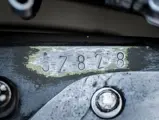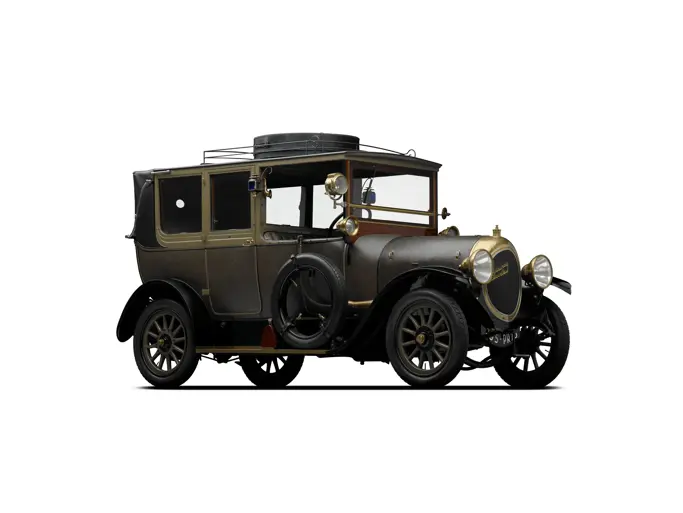
1939 Bugatti Type 57C Atalante by Gangloff
{{lr.item.text}}
$2,370,000 USD | Sold
{{bidding.lot.reserveStatusFormatted}}
- A very late-production Atalante; produced to order by Gangloff to a unique “long-tail” design
- Numerous special original details, including the sought-after roll-top roof
- Factory-supercharged 57 C chassis, retaining its original engine and gearbox
- Known history from new and accompanied by report from marque expert Pierre-Yves Laugier
- Only two owners from 1955 to 1996 when acquired by the Petersen Automotive Museum
- A magnificent example of the Bugatti Type 57 C with stunning one-off coachwork
THE BUGATTI TYPE 57 C ATALANTE
Bugatti’s ultimate pre-war roadgoing model, the Type 57 was the successor to the swift and comfortable Type 49, but it shared little except for the bore and stroke of its inline eight-cylinder engine. The design was steadily revised between 1934 and the end of production in 1939, with the late third series cars like chassis 57828, offered here, benefitting from nearly every engineering upgrade developed for the Type 57, including a reinforced cross-braced chassis, strengthened rear axle, rubber engine mounts, telescopic shock absorbers, and Lockheed hydraulic brakes. Optionally available beginning in 1937 was a supercharged engine with a Roots-type blower, identified as a Type 57 C, which could boast over 160 horsepower—a significant improvement over a stock Type 57.
When the Type 57 was introduced in 1934, Bugatti offered three body styles designed in-house, built primarily by the factory coachworks in Molsheim, and named after famous mountain peaks and passes in the French and Italian Alps: the Galibier four-door pillarless saloon, the Ventoux two-door saloon, and the Stelvio drophead coupe with coachwork subcontracted to Gangloff of Colmar. A sleek two-seat sports coupe, the Atalante, conceived by Jean Bugatti and inspired by the Aérolithe coupe, arrived in 1936. It cost twice as much as some other factory offerings. As a result, only 33 Type 57 Atalantes were built, in addition to 17 constructed on the Type 57 S chassis, with some of the most exclusive examples actually produced by Gangloff by special order, rather than by the factory shops.
CHASSIS NUMBER 57828
Chassis number 57828 is recorded on the factory build records as the most desired object, a factory-supercharged Type 57 C, noted by the “C” suffix on its original engine number, 100, which remains in place to this day. It was produced in May of 1939, a year in which, as is noted in the American Bugatti Club Register, the factory coachworks were focused nearly entirely on production of the four-door Galibier, and thus the more sporting and rakish designs had either been outsourced in limited numbers or simply ceased altogether. Nonetheless, when famed driver and prominent Hotchkiss dealer Louis Dupont of Oran, Algeria placed a custom order for the ultimate sports coupe on the 24th of March 1939, Bugatti responded and ultimately delivered one of the last great Type 57s.
Dupont’s order was for an Atalante. Because Carrosserie Bugatti had discontinued the design by this point, Gangloff built the special-order body—listed by Barrie Price as one of perhaps only five or six Atalante “specials” built by them to a Molsheim design revised by Lucien Schlatter with slightly larger dimensions and extended rear bodywork and fenders.
Reportedly one of the most expensive Bugattis produced in 1939, chassis number 57828 offers a fascinating combination of the best design features introduced throughout Atalante production. It possessed the more sensual Aravis-type “long-tail” styling, but had a rolling fabric roof that retracted fully back to the rear deck, known to Bugatti enthusiasts as the “bureau top.” Finished to design number 4011, it was a unique creation, and Atalante in everything but its name—officially, it was a coupé decouvrable, in reference to the opening roof. Dupont’s nephew Jean de Flotte recounted to historian Pierre-Yves Laugier that his uncle had raced Amilcars, Alfa Romeos, and Delahayes, and bought the Bugatti with competition intentions.
The completed car was delivered on 5 August 1939 and is believed to have been kept in Algeria throughout the war years as it was re-registered in Oran in 1952. In late 1954 it went to the well-known Parisian Bugatti garage of Francis Mortarini, then sold in 1955 to longtime Bugattiste Georges Combe, where it remained in Paris and was registered there as 5065 DJ 75. Interestingly, Laugier notes that in May 1955 the car was brought to the renowned Figoni coachworks in Boulogne sur Seine, to have work done on the windshield and doors. Photographs of the car in this era clearly show it in its present form, including the bold chromed “arrows” on the beltline moldings and tail fin.
Following 22 years of regular use, including in occasional rallies and hillclimbs, Mr. Combe’s estate sold the Bugatti in 1977 to Hervé Charbonneaux, son of renowned French industrial designer, automobile enthusiast, and museum impresario Philippe Charbonneaux. During its time in the Charbonneaux museum, the car was refinished from 1980 to 1981 from blue and black to its original color scheme of black with red highlights. It was also fitted with a replacement cylinder block casting acquired from Bart Loyens in the same period. The car was sold from the Charbonneaux stable in 1996 to Ton Meijer of the Netherlands, then by him in 1999 to Eric Albada Jelgersma. He, in turn, sold it in 2006 to the Petersen Automotive Museum of Los Angeles, in whose famed halls it has been regularly exhibited now for the last 14 years alongside many other outstanding examples of important French coachwork.
Laugier notes that the car retains its original chassis plate, gearbox, front axle, and instrumentation, and its engine sump is still correctly stamped 57828 and 100C. Overall the restoration is well-preserved and still highly attractive, although the temptation for a fresh restoration elevating this stellar Bugatti into a potent international concours competitor at the most prestigious events is surely present.
“The Gangloff Coupe body to drawing 4011 is a unique design by the Alsatian firm from Colmar,” Laugier said, “and one of the most beautiful profiles on the Type 57 chassis...a unique and splendid Bugatti of the last evolution of the Type 57 C.”

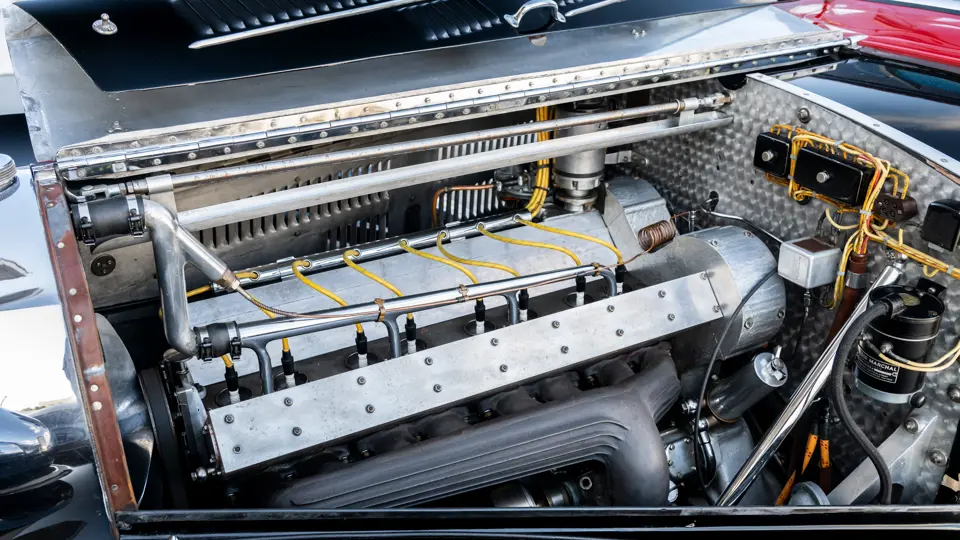




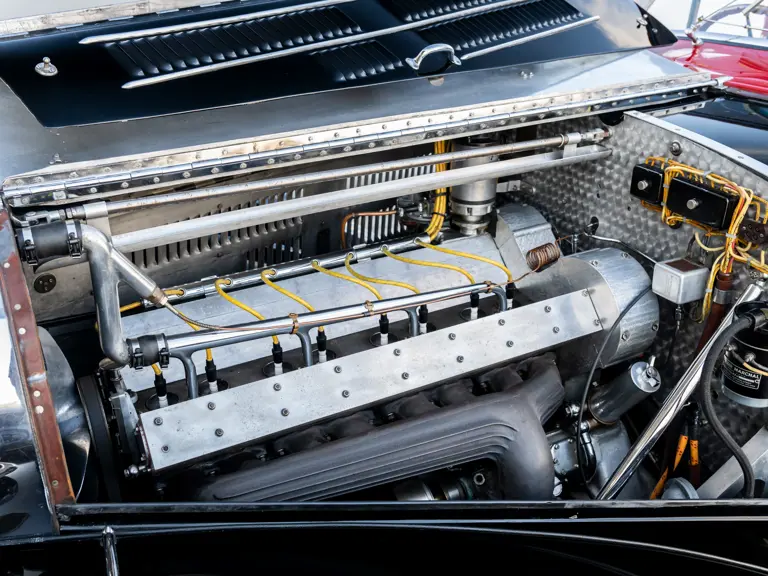











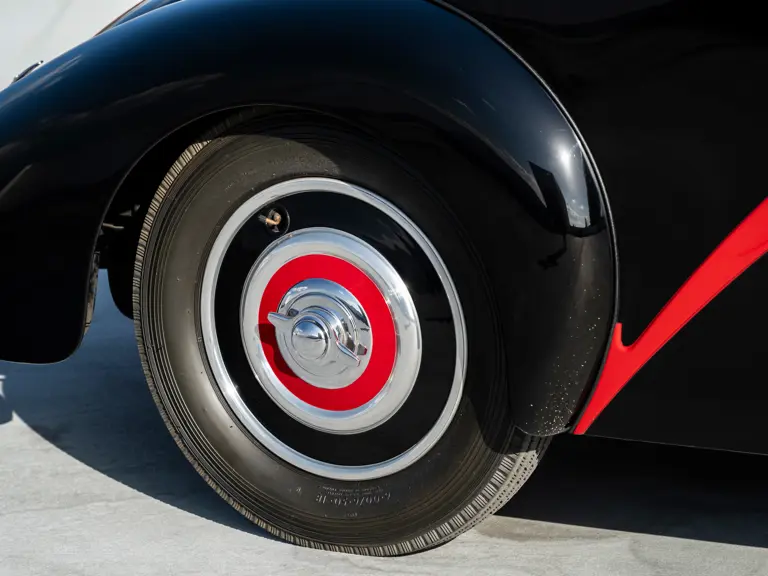



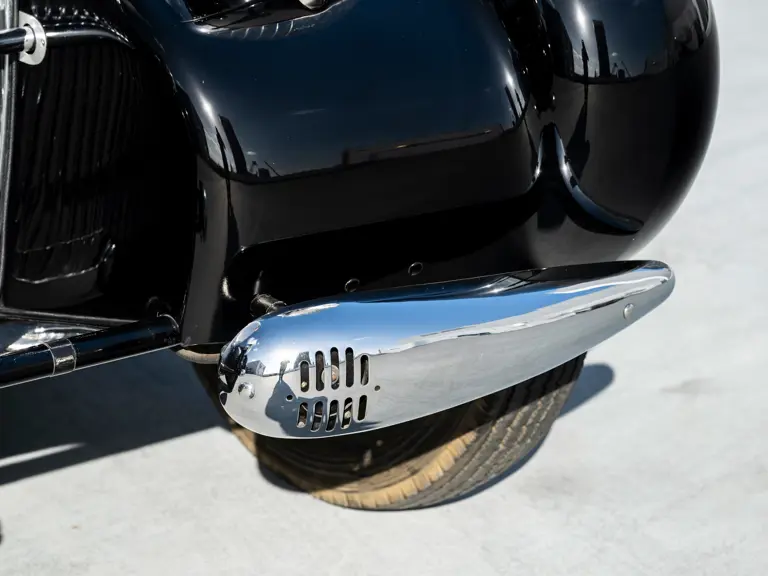

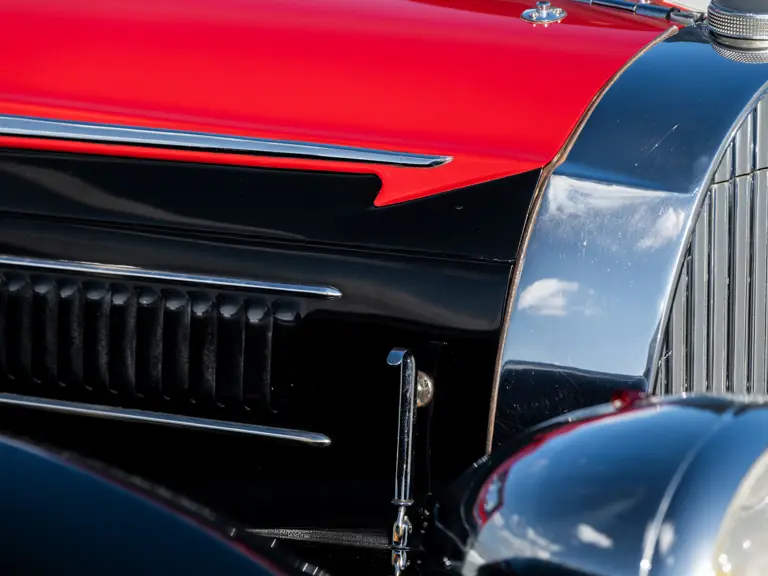















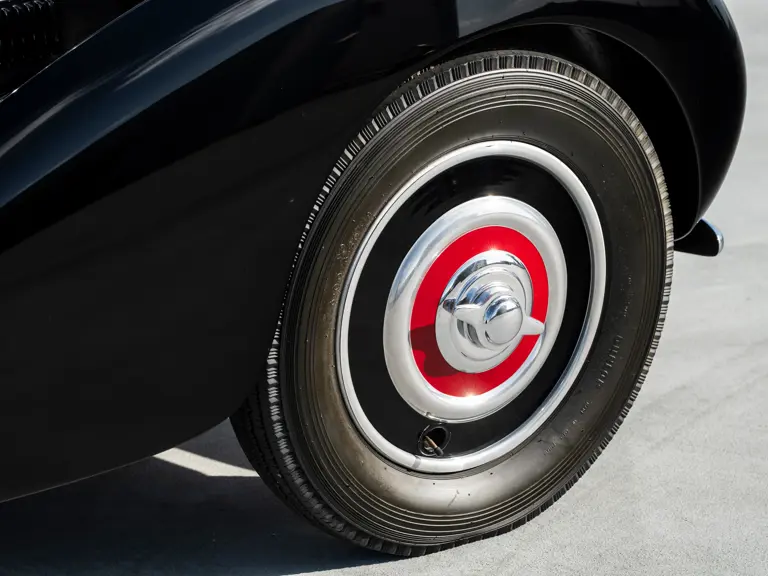


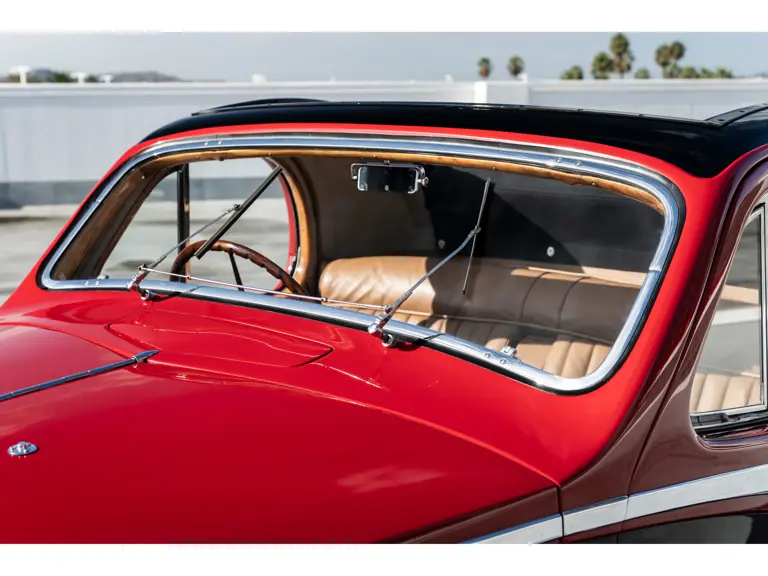




















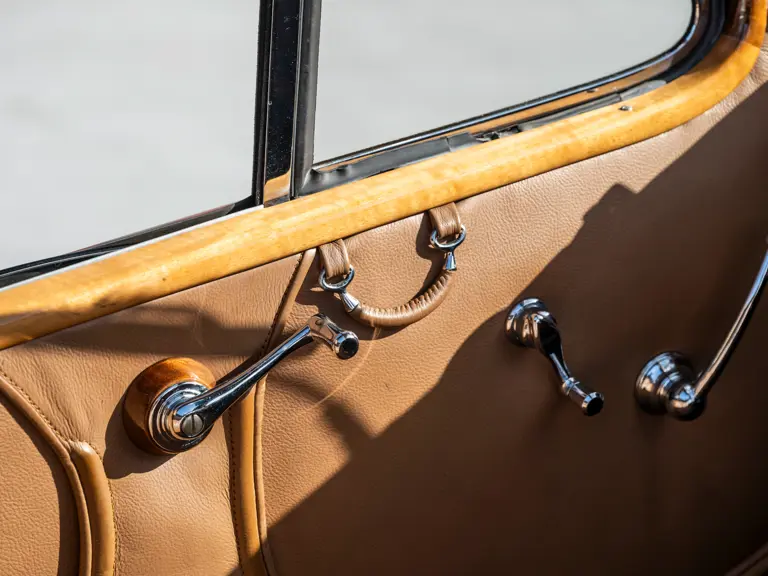
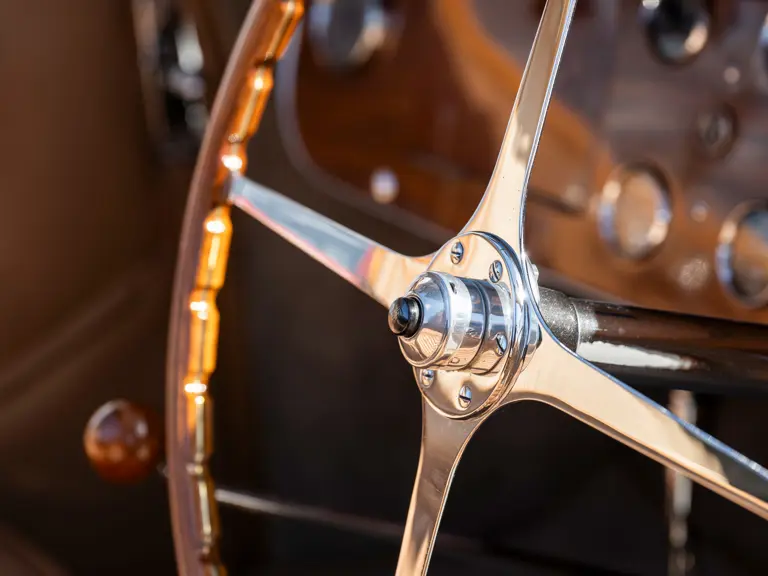













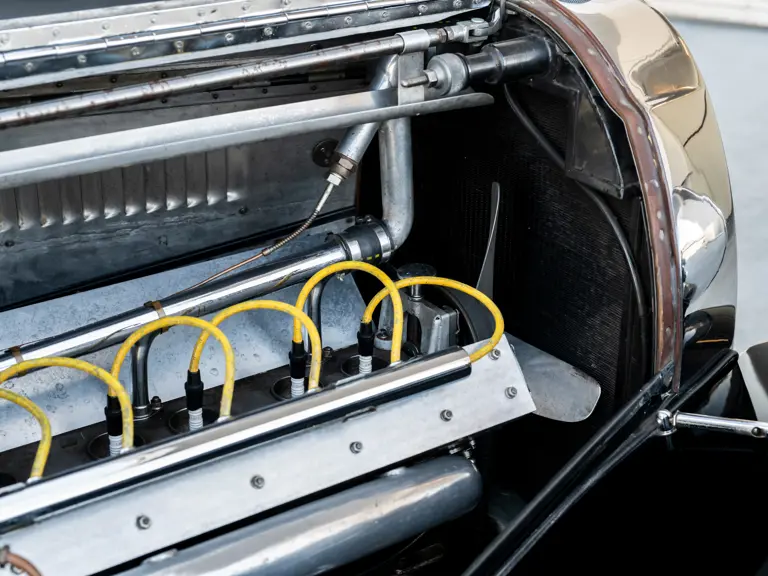

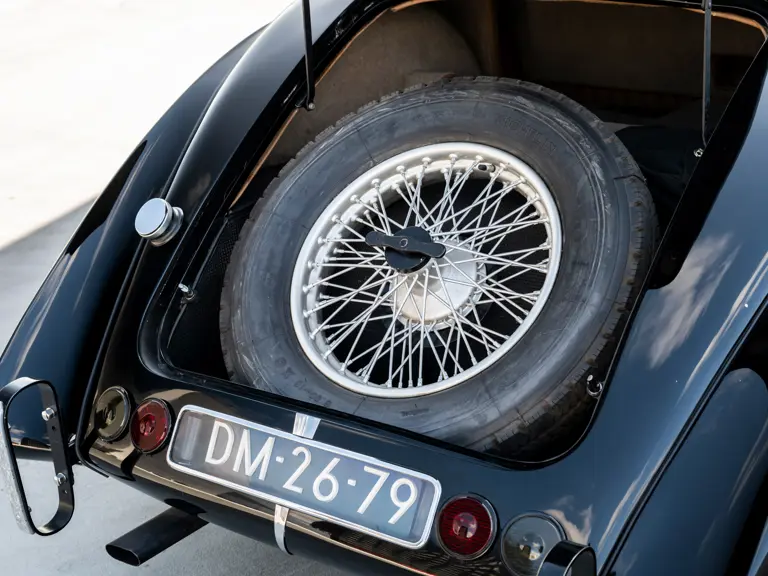




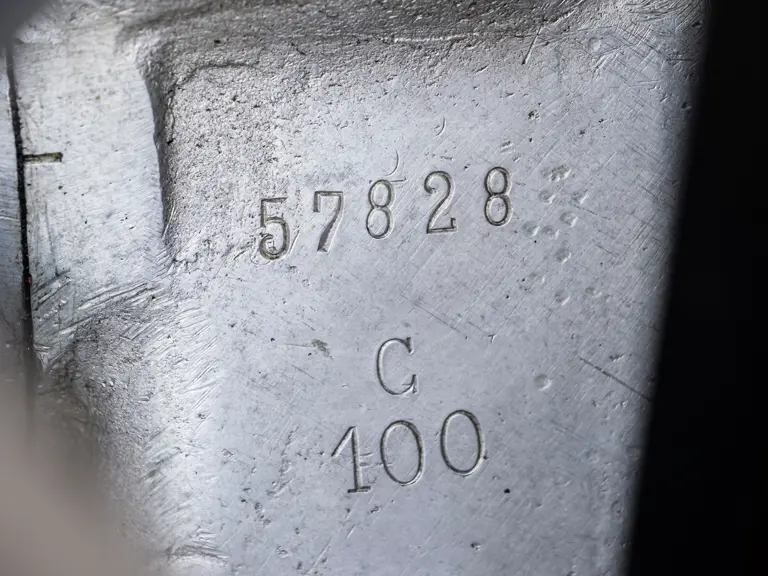
 | Phoenix, Arizona
| Phoenix, Arizona



















